
Zion National Park in Utah is home to some iconic hikes and famous views / Rebecca Latson
This coming Saturday, April 19th, is the start of National Park Week 2025. You may already know this if you read the Traveler’s article about this event and the special programs offered this week at various parks. If you don’t already have plans, this week should be the impetus you need to start formulating an idea for a trip to one of the 433 units within the National Park System.
So many units, so little time. Where should you start? Well, it depends upon what most interests you.
Water And Beaches

Exploring the America shipwreck, Isle Royale National Park / NPS file
There are plenty of parks where you can motorboat, kayak, canoe, snorkel, and scuba dive. For instance, you can scuba dive down to some of the shipwrecks at Isle Royale National Park in Michigan. Indeed, the water around Isle Royale is home to the National Park Service's most intact collection of shipwrecks. Channel Islands, Virgin Islands, Biscayne and Dry Tortugas national parks are also great for scuba diving as well as snorkeling the colorful reefs, viewing the kelp forests, and watching marine life dart in, out, and around those reefs beneath the waters in Florida, California, and the Caribbean.

Jackson Lake makes a nice venue for a little kayaking, Grand Teton National Park / M. Shoop
Feel like paddling or motorboating (even houseboating) the waters of a national park? Grand Teton, Everglades, Yellowstone, Channel Islands, North Cascades, Glacier Bay, and Kenai Fjords national parks, and Curecanti, Glen Canyon, Whiskeytown and Lake Mead national recreation areas are just a few of the many park units in which you can ply the waters. No matter your choice, you’ll need to check the parks’ websites regarding regulations prior to launching your water vessel, since many of the parks require proof of inspection for invasive species like quagga or zebra mussels.
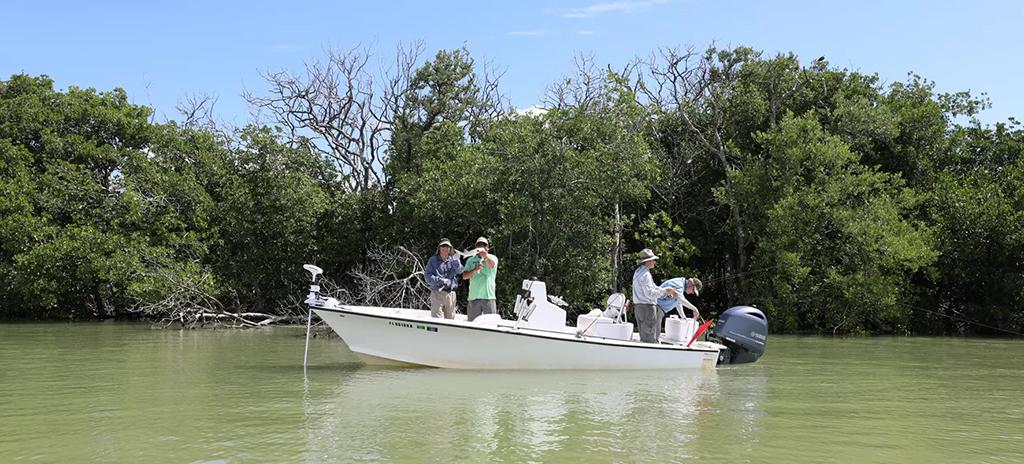
Fishing is one of the most popular outdoor activities at Everglades National Park / NPS-M. Collier
How about fishing? Katmai National Park and Preserve, Everglades, Biscayne, Acadia, Yellowstone, Glacier, and Great Smoky Mountains national parks are all great spots in which to test your angling skills and perhaps catch that night’s dinner. Each unit is subject to state and park regulations requiring licenses and limiting certain types of fish and fishing.

You never know what you might discover in a tidal pool at Ruby Beach, Olympic National Park / Rebecca Latson
If you’d rather just relax or stroll along sandy or pebbly beaches, exploring tidepools, sea stacks, and light houses, with maybe a little bird watching thrown in for good measure, then perhaps you should consider Padre Island, Cape Hatteras, Gulf Islands, or Point Reyes national seashores, Redwood National and State Parks, Olympic National Park, or Acadia National Park.
Forests

The cool, green, shadowed Twin Firs Trail, Mount Rainier National Park / Rebecca Latson
If wandering a cool, sun-and-shade-dappled forest filled with many shades of green, exploring the tangled maze of roots sticking up from red-stained water in a mangrove forest, “leaf peeping” the brilliant orange, gold, yellow, and red leaves of autumn, or gazing up in awe at incredibly large, tall trees is more your style, the National Park System provides many choices: the giant sequoia and coastal redwood trees of Sequoia and Kings Canyon National Parks and Redwood National and State Parks in California; the temperate rainforests of Olympic National Park and the lush interior lowland forests of Mount Rainier National Park, both in Washington state; the ancient bristlecone pines of Great Basin National Park in Nevada, mangrove forests of Everglades National Park; the colorful autumn hues of forests at Acadia, Shenandoah, Rocky Mountain, Great Smoky Mountains, and Cuyahoga Valley national parks; and autumnal leaves all along the Blue Ridge Parkway.

Exploring a mangrove forest at Everglades National Park / NPS - G. Gardner
Flowers
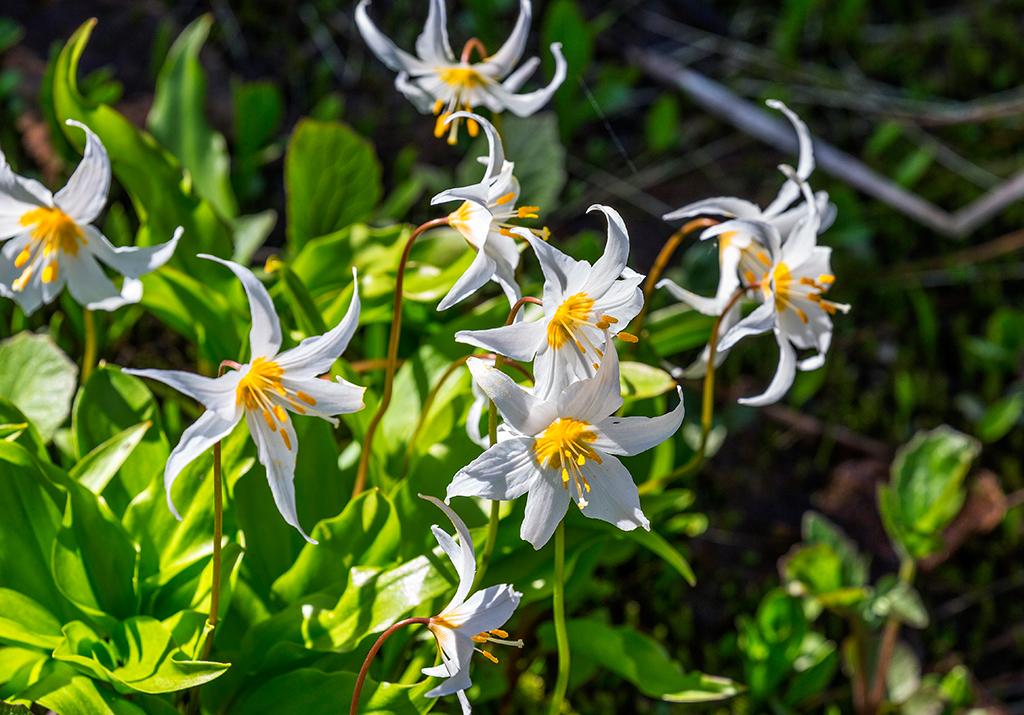
Avalanche lilies, Mount Rainier National Park / Rebecca Latson
How about wildflowers, Travelers? Who among you is not entranced by the patches or even entire meadows blanketed with the many saturated colors of flowers blooming during the springtime? Of course, spring’s arrival varies, depending upon location. Wildflower blooms at Great Smoky Mountains National Park in the Southeast will pop up at a different time from the cactus blooms at Big Bend National Park in the Southwest. Higher-altitude parks like Mount Rainier or Rocky Mountain national parks, where winter snows linger through mid-late July mean spring doesn’t begin until at least June (in the lower elevations). Some parks known for bloom events - like the superblooms at Death Valley National Park - may not even produce during years of drought because everything depends upon the amount of rainfall experienced within past months.

Depending upon how much rain occurred over the previous season, you might or might not see bright cactus flowers like this prickly pear bloom at Big Bend National Park / Rebecca Latson
History
How many of you enjoy learning about United States and park history? This includes specific places, people, cultures, events, and even transportationwithin the U.S.
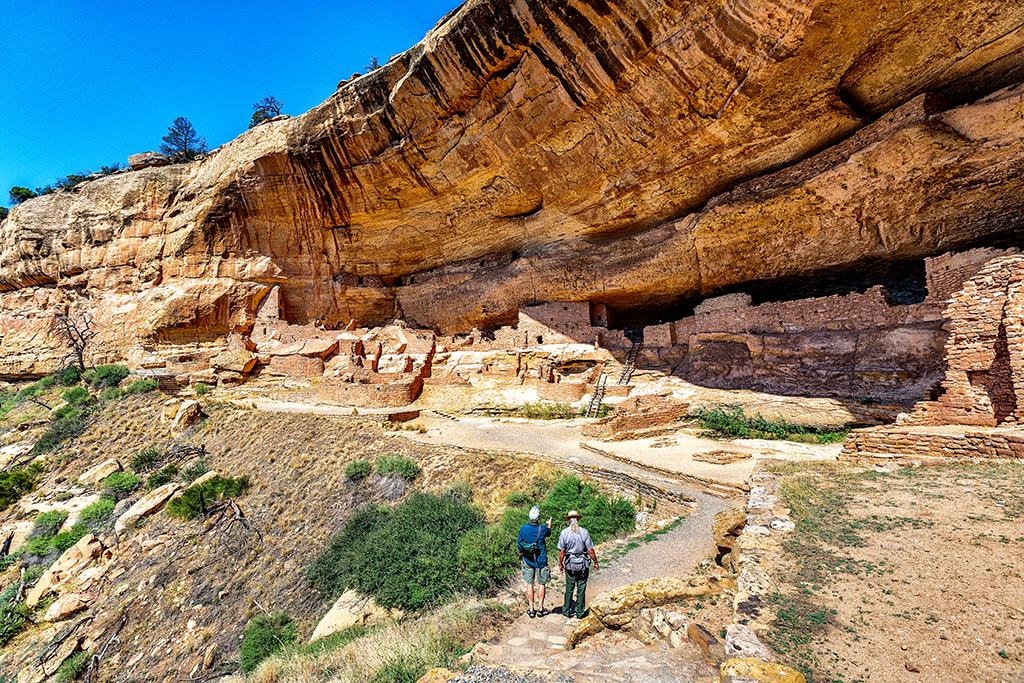
Mesa Verde National Park preserves the history and architecture of cliff dwellings like Long House / Rebecca Latson
For history about the nation’s Indigenous peoples and cultures, you might consider Mesa Verde National Park in Colorado, Petroglyph National Monument and Chaco Culture National Historical Park, both in New Mexico, Wupatki National Monument in Arizona, Puʻuhonua o Hōnaunau National Historical Park in Hawaii, and Pipestone National Monument in Minnesota.

Looking out over the fort's grounds from the Bastion, Fort Vancouver National Historic Site / Rebecca Latson
Interested in forts? How about Fort Vancouver National Historic Site in Washington State (and part of Oregon), Lewis and Clark National Historical Park in Oregon, Fort Stanwix National Monument in New York, Christiansted National Historic Site in the Virgin Islands, Castillo de San Marcos National Monument in Florida, Fort Laramie National Historic Site in Wyoming, and Fort Jefferson at Dry Tortugas National Park in Florida.

The first class of cadets, Tuskegee Airmen National Historic Site / NPS file
There are many park units honoring the legacy and accomplishments of people such as the Tuskegee Airmen National Historic Site in Alabama, Harriet Tubman Underground Railroad National Historical Park in Maryland, Rosie The Riveter WWII Home Front National Historical Park in California, Abraham Lincoln Birthplace National Historical Park in Kentucky, and George Washington Carver National Monument in Missouri.

The eight-ton door to the launch station at Minuteman Missile National Historic Site / Rebecca Latson
The National Park System has saved, restored, and now preserves historic homes, buildings, and even missile sites. How many of you have visited any of the following: Harry S. Truman National Historic Site in Missouri, Lyndon B. Johnson National Historical Park in Texas, Cane River Creole National Historical Park in Louisiana, John Fitzgerald Kennedy National Historic Site in Massachusetts, Nicodemus National Historic Site in Kansas, Minuteman Missile National Historic Site in South Dakota, and Manhattan Project National Historical Park in New Mexico, Washington State, and Tennessee?

The "Bloody Angle," Fredericksburg & Spotsylvania National Military Park / NPS-Buddy Secor
Important battles, events, and historic locations are also commemorated in the National Park System: Stonewall National Monument in New York, Flight 93 National Memorial in Pennsylvania, World War II Memorial and Korean War Veterans Memorial, both in Washington, D.C., Fredericksburg and Spotsylvania National Military Park in Virginia, Stones River National Battlefield in Tennessee, Little Bighorn Battlefield National Monument in Montana, and Pearl Harbor National Memorial in Hawaii. Golden Spike National Historic Park in Utah celebrates the completion of the first transcontinental railroad across the United States.

River and rock, Horsethief Butte and the Columbia River, Columbia Hills Historical State Park, Lewis and Clark National Historic Trail / Rebecca Latson
If you are looking to follow a historic route or trail, look no further than the Lewis and Clark National Historic Trail covering 16 states and 4,900 miles; the Oregon National Historic Trail covering seven states and more than 2,000 miles; Nez Perce National Historical Park, with its 38 places important to the history and culture of the nimíipuu; Scotts Bluff National Monument, which served as a landmark for peoples from Native Americans to emigrants on the Oregon, California and Mormon Trails; and Lassen Volcanic National Park, where you can hike a portion of the Nobles Emigrant Trail that led to California.

Wagons ho! A model of an ox-drawn Conestoga wagon used along the trail past what is now Scotts Bluff National Monument / Kurt Repanshek
Wildlife

Feathered hitchhikers, Lamar Valley, Yellowstone National Park / Rebecca Latson
Looking to view and photograph some wildlife during your national park stay? Nicknamed “America’s Serengeti,” Yellowstone National Park is probably the best-known park for wildlife viewing (bears, wolves, coyotes, river otters, elk, bighorn sheep, pronghorn) but it’s certainly not the only park unit for abundant animals. Everglades National Park hosts a plethora of wildlife, from the gentle manatee, to the toothy alligator and crocodile, to over 360 species of birds in the park’s forests, wetlands, and coastal areas. If it’s a particular animal you are hoping to see, such as elk, mountain goats, bears, or bison, then Theodore Roosevelt (bison, elk, bighorn sheep, prairie dogs), Olympic (Roosevelt elk), Wind Cave (bison, pronghorn, prairie dogs), Badlands (bison, prairie dogs, bighorn sheep) Glacier (bears, mountain goats, moose), Mount Rainier (bears, foxes, elk, mountain goats), Rocky Mountain (elk, bighorn sheep, moose), Grand Teton (pronghorn, bison, elk, grizzly bears), and Great Smoky Mountains (salamanders, black bears, synchronous fireflies) national parks, as well as Katmai National Park and Preserve, Lake Clark National Park and Preserve (bears, bears, and more bears), Assateague Island National Seashore (wild horses), Point Reyes National Seashore (Tule elk, elephant seals) and Redwood National and State Parks (Roosevelt elk, sea lions, black bears) are the parks to visit.
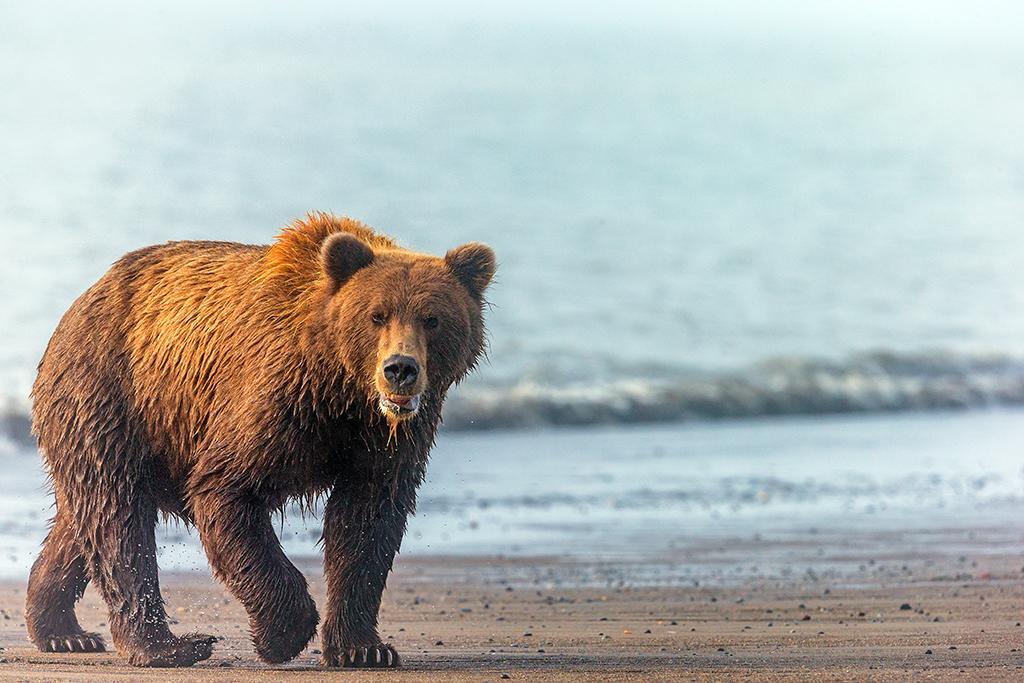
A coastal brown bear, Lake Clark National Park and Preserve / Rebecca Latson
For The Birds
How many of you are birders or bird photographers or just enjoy seeing birds in a park? Many units are homes or migratory way stations to myriad bird species, and some parks are homes to specific iconic bird species.

Wading birds feeding at Shark Valley Slough, Everglades National Park / NPS-Patty Palma
Everglades National Park hosts over 360 bird species, from water and wading birds to songbirds to birds of prey. National seashores are also great places at which to use binoculars and camera. Padre Island National Seashore in Texas has documented over 380 bird species, nearly 400 bird species have been sighted at Cape Hatteras National Seashore in North Carolina, and more than 330 species have been recorded at Fire Island National Seashore in New York. Travel to Pinnacles National Park or Redwood National and State Parks and you might see a California condor. Katmai National Park and Preserve and Lake Clark National Park and Preserve, along with Olympic, Acadia, and Yellowstone national parks are where to go for bald eagle sightings, and Haleakalā National Park on the island of Maui in Hawaii is where you might spot rare and endangered colorful little jewels known as honeycreepers. Hike within the Chisos Mountains of Big Bend National Park and you might spot the Colima warbler, a sought-after species for birders.

Bald eagles along the coast, Lake Clark National Park and Preserve / Rebecca Latson
Iconic Landscapes And Geology

The tallest sand dunes in North America are nestled snugly against the Sangre de Cristo Mountains at Great Sand Dunes National Park and Preserve / Rebecca Latson
So many units of the National Park System are famous for their iconic landscapes and geology. Included in this list are Zion, Bryce, Capitol Reef, Arches, Canyonlands national parks in Utah; Mount Rainier National Park in Washington state; Haleakalā and Hawai’i Volcanoes national parks in Hawaii; Big Bend and Guadalupe Mountains national parks in Texas; Pinnacles, Death Valley, Lassen Volcanic, and Yosemite national parks in California; Glacier National Park in Montana; Glacier Bay, Kenai Fjords, Katmai, and Denali national parks and preserves in Alaska; Devils Tower National Monument, Yellowstone and Grand Teton national parks in Wyoming (and parts of Montana and Idaho); the Ice Age Floods National Geologic Trail in Montana, Idaho, Washington State, and Oregon; Grand Canyon and Petrified Forest national parks in Arizona; Crater Lake National Park and John Day Fossil Beds National Monument in Oregon, Black Canyon of the Gunnison National Park, Florissant Fossil Beds National Monument, and Great Sand Dunes National Park and Preserve in Colorado, White Sands National Park and Valles Caldera National Preserve in New Mexico, Craters of the Moon National Monument and Preserve in Idaho, and Badlands National Park in South Dakota.

Yosemite Valley landscape, Yosemite National Park / Rebecca Latson
Caves
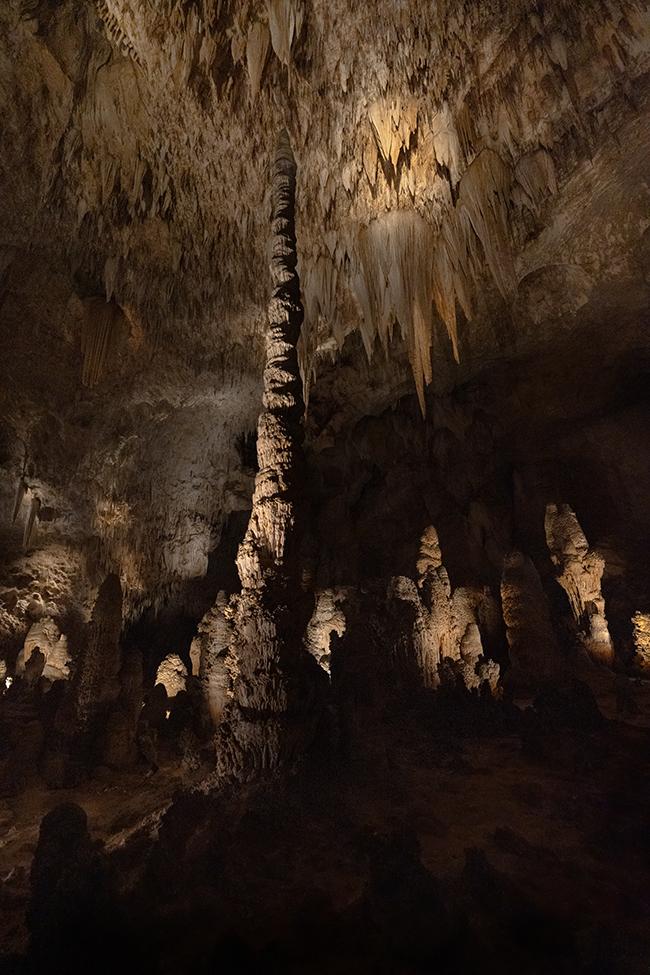
Cave formations (speleothems) in the Big Room, Carlsbad Caverns National Park / Rebecca Latson
Let’s not forget the units of the National Park System that are underground. Touring the caves here make for a nice cool experience on a hot summer day, in addition to learning fun facts about the speleothems (cave formations) populating these subterranean wonders. There are several cave-centric national parks and monuments in addition to national park units famous for other environments but also are homes to caves located within their boundaries. How many of you have visited any or all the following: Carlsbad Caverns, Wind Cave, Mammoth Cave national parks, Jewel Cave National Monument, Oregon Caves National Monument and Preserve, Sequoia National Park’s Crystal Cave, Great Basin National Park's Lehman Caves, Nahuku (Thurston Lava Tube) at Hawai'i Volcanoes National Park, or Pinnacles National Park’s unique talus caves?

Take the time to explore Thurston Lava Cave (Nāhuku), Hawai'i Volcanoes National Park / Rebecca Latson
Lodging And Camping
Thinking of spending a night or two at an in-park lodge? In addition to the warm, rustic architecture and accommodations of a lodge room, most park lodges also have some historic significance to them.

An interior view of a cabin at Cedar Pass Lodge and Cabins, Badlands National Park / Rebecca Latson
Nowadays, lodge rooms are a bit of a splurge, to say the least, but many Traveler commenters have listed their favorites, such as the cabins at Bryce and Zion national parks in Utah, Grand Canyon Lodge on the north rim; and Bright Angel and Maswik lodges on the south rim of Grand Canyon National Park in Arizona, Many Glacier Hotel and Glacier Park Lodge at Glacier National Park in Montana, Yellowstone Lake Hotel and Old Faithful Inn at Yellowstone National Park in Wyoming, Cedar Pass Lodge cabins at Badlands National Park in South Dakota, The Ranch at Death Valley at Death Valley National Park in California, the Chisos Mountains Lodge at Big Bend National Park in Texas, and Volcano House at Hawai’i Volcanoes National Park on the Big Island. Even the very basic, sparse Manzanita Lake camping cabins in Lassen Volcanic National Park have a certain charm to them, even without water or electricity.

A Manzanita Lake camping cabin, Lassen Volcanic National Park / Rebecca Latson
If you’d rather pitch a tent or park your RV beneath the stars at a park unit, there are scads of campgrounds from which to choose, including frontcountry, primitive, and wilderness backcountry camping. If you pilot an RV or tow a trailer, you might want to go to the App store and download the free National Park Traveler Essential RVing Guide To The National Parks app for both iPhones and Android phones.
The parks listed in this article are but samplings of the 433 units you can explore within the National Park System. Think of National Park Week as a great kick off for planning and visiting one of these parks during 2025. And remember, where ever you choose to go, check that park’s website to find out what fees (if any) are required, including entrance fees, timed-entry reservations, and tour fees. Check the weather forecast so you’ll be prepared for the elements, keep your distance from and don’t feed the wildlife (no selfies with the fluffy cows), and pack out what you pack in. Stay safe and have fun with your national parks explorations and adventures.
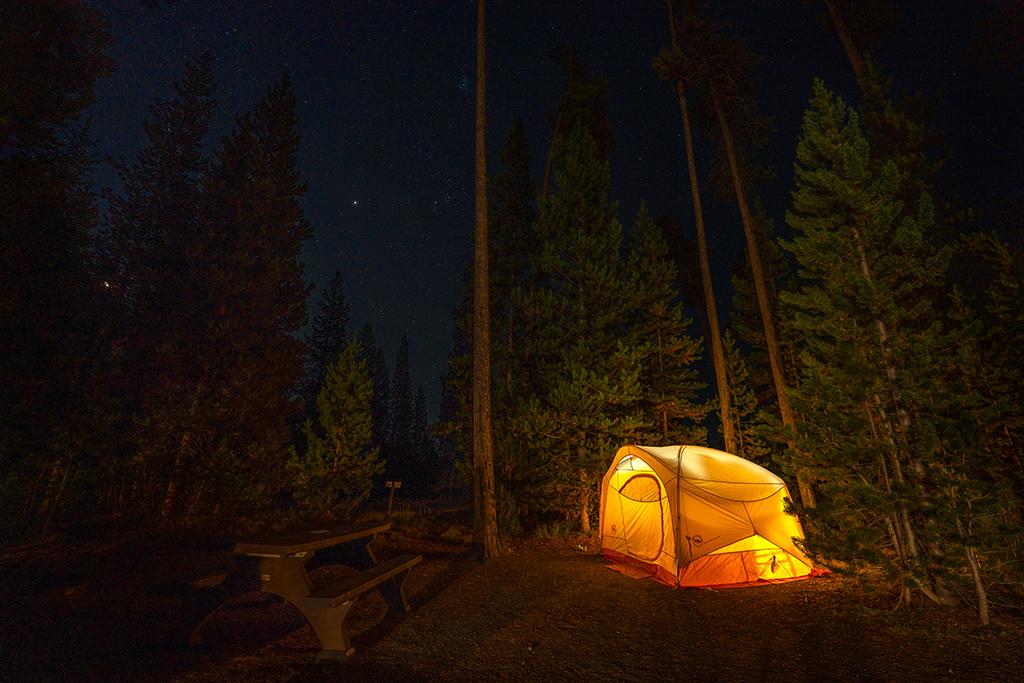
There's something to be said for pitching a tent beneath the stars at a national park, Yellowstone National Park / Rebecca Latson




 Support Essential Coverage of Essential Places
Support Essential Coverage of Essential Places






